The S550 Mustang introduction to the world revolutionized the muscle car landscape and changed how the
competition would look at the legendary pony car. Within the last five years, Ford and Ford Performance
have pushed the S550 to the absolute edge of performance. Meanwhile, S550 Mustang models like the V6,
EcoBoost, and GT's initial introduction were already a showstopper in 2015; it didn't stop engineers
from looking to the past for inspiration. Shortly after that, the S550 launched, Ford Performance
engineers and designers went all hands on deck to bring back a legend that hadn't seen showrooms in
fifty years. Yes, we are talking about the legendary Shelby GT350! Its revitalization would make a
sledgehammer impact on the entire sports car market once again as it did in 1965. Using inspiration from
the original GT350 & GT350R, engineers went to work to create the most track-focused snake ever to hit
the track or street. With modern technology and engineering, Ford Performance engineers came up with the
most celebrated factory-built Shelby Mustang to see the road course. As the years went by, Mustang engineers continued to find new ways to make the S550 stallion better and
better. The use of a no-compromise attitude became the focal point for all Mustang engineers during this
time. After regular business hours, engineers who are true car enthusiasts in their own right got
together to tinker and figure out how they could make a better version out of the already potent GT
Performance Pack. Their mission was simple, make the Mustang GT corner harder, grip fast, and be more
agile out on the track, all while still giving potential consumers the ability to drive their pony
daily. It resulted in forming the Mustang GT Performance Package Level 2; this is a racehorse on
steroids, which the likes a Mustang GT has never seen in stock form. As the Mustang community knows when
it comes to factory-built track cars, the GT350 is at the top of the food chain, whereas the Mustang GT
PP2 is the new challenger within the herd to challenge for the top spot. So it begs the question which
is better and what purpose each one serves in the Mustang family? Fortunately, Steeda is here to settle this battle, so you don't have to; throughout the article, we will
give you a complete analysis and overview to see who comes out on top!
Sibling Rivalry
Head-To-Head
Shelby GT350
Mustang GT Performance Pack 2
Engine & Performance
Transmission
Vehicle Specs
Throughout Mustang history, there has always been a family rivalry between various models of the herd.
For example, if you go back to the original Mustang in the 1960s, Ford pushed many other models to widen
the customer base. Models like the Mach 1, Boss 302, GT, and Shelby GT350 made each stallion possible to
one-up the other. This groundwork laid the foundation for all Mustang models to come after and
ultimately led to the innovation that is in the S550 Mustang today. Unlike previous Mustang generations,
the S550 changed the stereotype of what enthusiasts thought of when it came to the original pony car.
Ford knew that changing the public's hearts and minds would have to radically revolutionize how a
Mustang performed, looked, and felt to potential consumers. Using these characteristics and thought processes, the Mustang engineers went to work to replace the
outdated solid rear axle, obsolete interior, and poor handling. When it all was said and done, the S550
Mustang came to be what it is today because Mustang engineers never took the road less traveled,
resulting in the no-compromise push to create the most advanced Mustang to ever come out of the Flat
Rock Assembly Plant. While the Shelby GT350 was purpose-built to attack the road courses and autocross,
the Mustang GT Performance Pack Level 2 is engineered to be the most agile Mustang GT to ever come
directly from Ford. You're probably asking yourself how Mustang engineers developed such an innovative
package that could exceed the already outstanding GT Performance Pack? The story goes, Mustang engineers, who are passionate automotive enthusiasts, collaborated after
regular Ford business hours in Ford's product development center to see how much farther they could push
the already potent Mustang GT. Using lessons learned from Ford Performance engineers and the Shelby
GT350, the Mustang team went to work to see what they could do to implement an even more hardcore pony.
A focal point was made to integrate parts from the Shelby GT350, such as Magnaride suspension, wider
wheels, stickier tires, and better cooling to aid the Mustang GT on track. It resulted in creating the
most agile Mustang GT ever to be produced from Ford Motor Company. While unexpectedly creating another
sibling rivalry in the process unknowingly. Like any sibling rivalry, there will always be some heated debates and competition that will take place.
The Shelby GT350 and Mustang GT PP2 are no different to this philosophy. First and foremost, the Shelby
GT350 was designed, built, and engineered for any enthusiasts to buy and go straight from the road to
the track without hesitation. With the groundwork set and chassis developed, Ford's incredible engineers
went to work to improve the S550 Mustang to new heights. Engineers started by completely revising the
front end of the S550 with a wider front track, stiffer materials, including carbon-fiber composite,
better airflow, aerodynamics, and chassis rigidity. Implementing these characteristics and components was vital to ensuring the S550 Shelby GT350 became the
most agile and sophisticated Cobra to hit the streets. After four years went by with full production of
the GT350 & GT350R, Ford went back to the drawing board to inject even more venom into the track
monster. Engineers eventually discovered that by adding even more aerodynamics in the swing spoiler,
stickier Michelin Pilot Sport Cup 2 tires standard, improving braking further, and better cooling, they
could shave off lap times and improve downforce, and increase handling. These ideas and characteristics
led to engineers being able to tinker on the original Performance Pack Mustang GT. As the Shelby GT350 was
built for track use using its 5.2L " Voodoo" Flat Plane Crankshaft V8, incredible braking, variable
exhaust modes,
aerodynamics, and calibration. Mustang engineers looked to using similar characteristics to build an
even more track-focused Mustang without breaking the bank for enthusiasts. After many long nights
and months, the performance-crazed engineers were able to add an offering that put the pony on
steroids. Ending in the result of the Mustang GT Performance Package Level 2, this thoroughbred of a
Mustang showed the track world that it doesn't take the top dollar to compete at a track day. Using
the broad spectrum of parts from the Shelby GT350, engineers figured out how to have the Mustang GT
become more precise, agile, and quicker only by adding specific components in the name of speed and
handling. Many enthusiasts have said that the GT Performance Pack 2 is a baby version of the Shelby GT350.
Now you
have to ask yourself, what are you willing to spend in the name of speed and performance? Where
the
Mustang GT PP2 is sub $45,000 and the GT350 is well over $60,000, you will have to address what
is very
important to you as far as components, drivetrain, features, and overall status. The PP2 at the
end of
the day is a Mustang GT with a host of upgraded parts, including Michelin Pilot Sport Cup 2
tires,
larger radiator, TORSEN 3.73 differential, wider aluminum wheels, K-Brace, MagneRide dampers,
and
performance front splitter. Similar options are also found in the GT350, but you have to ask
yourself,
is the extra $15,000 worth it? To make it easier on you, Steeda believes that if you're the type of enthusiast who wants to
drive and
track your Mustang, we say opt for the GT Performance Pack Level 2 Mustang. Contrary to popular
belief,
every Mustang owner will want to modify their pony to their liking in suspension, braking,
engine
performance, and exterior. As most enthusiasts know, the Shelby GT350 will edge the Performance
Pack 2
from the factory because of its 5.2L Voodoo engine, wider front track, power delivery, and
aerodynamics.
While on the other hand, you can save that money and progress with your Mustang while you become
a
better driver. Throughout Mustang history, few models are more significant than the GT350. During the Mustang's
early
years, Lee Iacocca knew that to get the Mustang to become a complete success; he needed
legendary racer
and car builder Carroll Shelby
to make a racehorse out of the mule. So with complete trust in Shelby,
Iacocca put full confidence in him to build a performance car out of the 1965 Mustang Fastback. Using a
high-output 289 cubic inch Ford V8, stiffer suspension, revised fuel system, stickier tires, and bigger
brakes, Carroll was able to inject his famous Cobra venom into the Mustang. Helping it finally become
the racehorse Lee Iacocca envisioned since the original concept. Fast-forward fifty years later, Carroll's same mindset and philosophy were injected into the S550
Shelby GT350. The
GT350 reinvigorated a segment of enthusiasts that had been waiting decades for the
return of the original snake. For over a century, Ford has pushed the edge on what is humanly possible
for anything automotive. Using this mindset, engineers developed the most advanced eight-cylinder engine
ever produced from Ford. It came to be known as the " Voodoo" 5.2L Flat Plane Crank V8; unlike a
traditional
cross-plane crank, a flat-plane crankshaft fires in different firing order then its 5.0L
Coyote V8 based counterpart. For Ford, this was unheard of in the automotive community
unless it was for racing applications. The Voodoo engine is so technologically advanced that
it allows for a whopping 8,250 RPM redline unheard of from an American production vehicle.
It will enable the GT350 to balance power and agility while ripping it around a road course
or autocross.
To give the GT350 characteristics of being powerful and yet graceful, Ford Performance
engineers ensured
it had the best suspension from a factory-built Mustang in history. Using technology in the form of
MagneRide dampers, vehicle dynamic engineers enabled the GT350 to have the best lateral grip possible
thanks to its independent rear suspension, upgraded sway bars, chassis rigidity, and aerodynamics. These
tools helped the GT350 to absolutely slay its number one rival in the Camaro. Unlike Shelby models of
the past during the S197 Mustang generation, they suffered from massive understeer upon corner entry.
Mustang engineers rose to the challenge to correct this problem with its suspension and, most notably,
by how it would brake and put down its power. These characteristics show why Ford got it right for the
first time; they knew it was possible by giving the S550 Mustang the most powerful naturally aspirated
engine while complimenting it with racecar-like suspension. There is no question in any Shelby and Mustang enthusiast mind that the Shelby GT350 is hands down the
best track-focused factory-built Shelby in history. It is due to the no-compromise pursuit of perfection
that the Mustang and Ford Performance engineers made happen. Over many decades, Ford has made strides to make the Mustang the working man's sports car
for anyone to
obtain. This mentality still holds very true in today's modern world, whereas cars like
the BMW M4 and
Porsche 911 are costly and can be hard to obtain for the average enthusiast. While the
S197 Mustang was
still in production, Mustang engineers introduced the GT model's
first performance package; it was to aid enthusiasts in becoming more competitive
amongst its European
and Japanese automotive rivals. Adding components such as bigger Brembo calipers and
rotors,
transmission cooler, better engine airflow, dampening, and engine calibration helped
take a step toward
the competition. Well, in 2015, when the S550 Mustang debuted, Ford didn't hold back in offering a
progression of the
original Performance Package for all GT models. To step up to its competitors, Ford
invigorated some of
the sauce that was in the GT350. Invigorating many performance parts such as suspension,
stiffer sway
bars, strut tower brace, free-flowing exhaust, massive six-piston Brembo front calipers
and rotors, and
specific tires. Unfortunately, Ford eventually came to another crossroads where the
competition took a
leg up again for track work. To fix this, it would take the very best of Mustang
engineers who are pure
car enthusiasts through and through. To address this, Ford Mustang engineers went right to work, staying long hours after
everyone in the
product development offices went home. Tinkering with the full parts bin, they figured
out how to bring
the Mustang GT to the forefront amongst its main competition in the Camaro SS 1LE, BMW
M4, and
Challenger Scat Pack 392. What they came up with was a complete list of solutions that
would aid the
S550 Mustang GT to handle better, get the Gen III Coyote's 460 horsepower down to the
ground, turn-in
quicker thanks to its revised MagneRide suspension, and Michelin Pilot Sport Cup 2
tires. They were turning the already potent American pony into something that every performance
enthusiast can
aspire to have. The Mustang team's mission was to create a next-level performance
package so that any
enthusiast could go directly to their local autocross, road course, or canyon road, and
compete very
well. Accomplishing this took the following component to make it happen: If you look at the 5.2L Voodoo V8 engine, it is an engineering marvel in every single
way. Never before
in Ford or Mustang history has there ever been Ferrari-like engine technology integrated
into Ford-based
performance vehicles. Ford used massive displacement with forced induction in a
supercharger to create
large horsepower amounts in the past. Since the S550 GT350 is centrally focused on being
the fastest and
quickest track-oriented Shelby in history, it is no wonder why Ford built the most
powerful naturally
aspirated V8 engine in company history. To make this happen, powertrain engineers went
all-in on
evolving the Coyote 5.0L engine. As a base block, the "Coyote" engine is 302 cubic inches; therefore, it needed a way to
produce more RPM,
broader powerband, increased torque, and be able to better breathe throughout its power
range. To
accomplish this feat, engineers bored and stroked the engine block to a displacement of
315 cubic inches
or 5.2 liters. Simultaneously, complimenting the engine block with a less restrictive
intake manifold
and reworking the cylinder heads to provide more CFM (Cubic Feet Per Minute) of air to
produce all 526
horsepower. Most importantly, the crown jewel to make this all happen is the
all-aluminum forged
flat-plane crankshaft to give it its 8,250 RPM redline. Without the Voodoo engine and
the work that went
into developing the GT350, it wouldn't be the Shelby we all know and love today! As each Voodoo engine is assembled it is built with the following components: Chances are if you have seen a Mustang within the last decade, you know the howl of the
almighty 5.0L
Coyote V8. Since the Coyote debuted in 2011, the world of American performance has never
been the same.
Throughout the last nine years, Mustang powertrain engineers have improved the success
of Ford's most
significant engine achievement in company history. What makes the Coyote so unique its
ability to make
power on-demand without skipping a beat. Most recently, Mustang engineers in 2018 launched the latest iteration of the legendary
Coyote in the Gen
III. This variant pushed the edge of what can be possible for a Mustang engine. Starting
with a complete
forged Boss crankshaft, pistons, connecting rods, and a wholly revised fuel system that
includes both
direct and port injection. Unlike the first two Coyote generations, the Gen III evolves
the status quo
by integrating higher compression of 12.0:1, a revised intake manifold, and a factory
cold air intake
system. All this adds up to help the Gen III Coyote 5.0L run more efficiently while
creating more
horsepower and torque at will. So this will help the Mustang GT Performance Pack Level 2
come off each
hairpin corner with 460 horsepower and 420 lb/ft of torque with a staggering redline of
7,500 RPM. Furthermore, thanks to an abundance of aftermarket support for the Gen III 5.0L Coyote
V8, companies like
Steeda make it easier to modify, giving you the option to add more horsepower as your
driving skill on
the track improves. It is where the Mustang GT PP2 shines best because of the ability to
modify it
without having to feel like you need the GT350. It allows you to have an excellent daily
driver while
still having the ability to hit your local autocross or road course on the weekends. To
improve Gen III,
5.0L Coyote's already potency; enthusiasts will seek many modifications, including; cat-back exhaust,
cold air intake,
twin-disc clutch, and larger throttle
body.
All of which will help
you get the edge over the Shelby GT350 in terms of raw horsepower and torque when it counts most.
When it comes down to brass tax, the Shelby GT350 is purposely designed to have
the best of everything
that the Mustang and Ford Performance engineers could throw at it. It is no
different from its
transmission; implementing a Tremec transmission is something Ford is all too
familiar with in Mustang
history. The GT350 is no exception; drivetrain engineers wanted to implement the
very best to help
potential owners and enthusiasts connect to their Shelby in the best possible
way. To implement this,
they turned to the latest version of Tremec's performance lineup of gearboxes.
Dropping in the very
stout and sophisticated TR-3160 transmission was the only gearbox that would
stand up to the challenge
of handling 526 horsepower and 426 lb/ft of torque while redlining at 8,250. It features six speeds, all of which are close ratio for optimal shifting and
precise heel-toe downshifts
when entering crucial corners out on your local road course, mountain road, or
autocross. From a pure
engineering standpoint, it is a marvel, and we think it is one of the best
manual transmissions to have
been implemented into a Shelby. Since 2011, the Mustang GT has been equipped with the Getrag MT-82 transmission,
which some say could be
better in terms of shift points, engagement, and build quality. Over the last
decade, Ford has made
strides to make better generations of the MT-82 to improve confidence in manual
transmission Mustang
models. The Mustang GT Performance Pack Level 2 is no different to this
philosophy, just like the GEN
III Coyote, Ford ensured the latest MT-82 would receive a revised shifter
linkage, twin-disc clutch,
lightweight flywheel, and more powerful internals. It gave the Mustang GT PP2 better transition throughout corner entry and exit
without throwing off
vehicle dynamics. One area in which Steeda has always been able to help the
MT-82 transmission is
providing enthusiasts and owners the ability to upgrade their shifter with one
of our Race Tri-Ax Short
Throw Shifters. You are adding to your ability to gain more confidence in your PP2 Mustang at
every
level, whether driving on the street, on a favorite backroad, or taking out the competition at the road
course.
Image Credit: Ford, Ford Performance,
Car & DriverShelby GT350 vs Mustang GT PP2: Head To Head
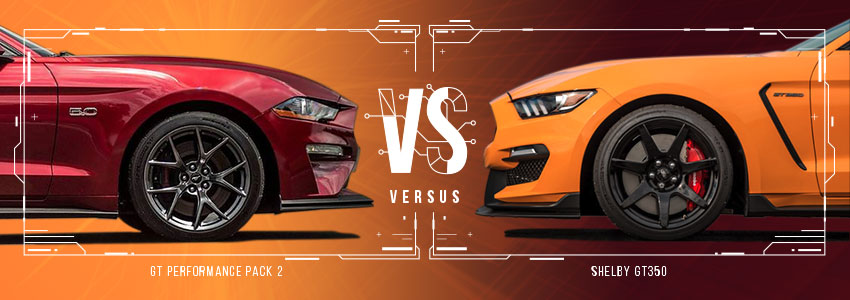
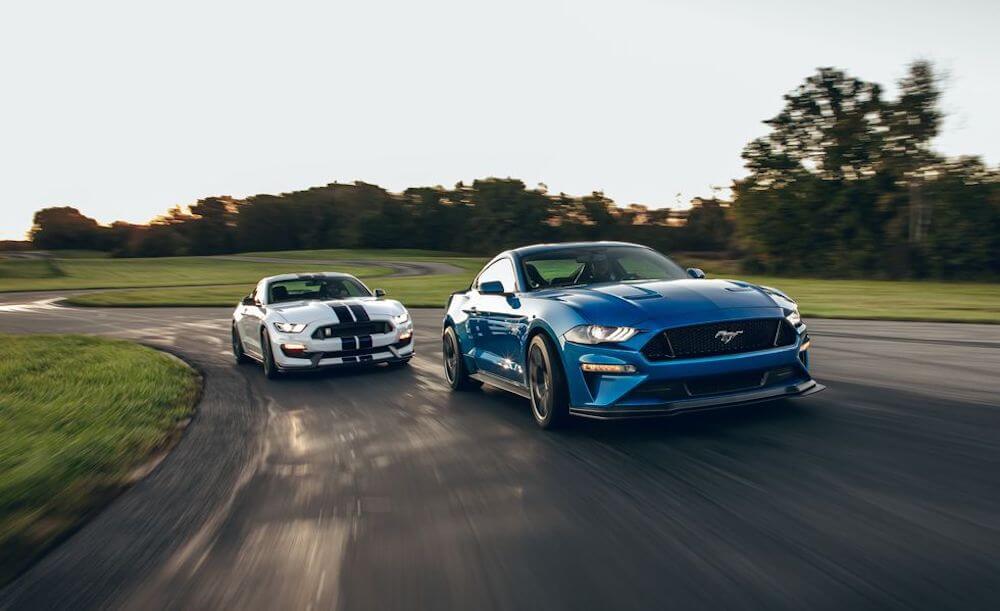
Sibling Rivalry
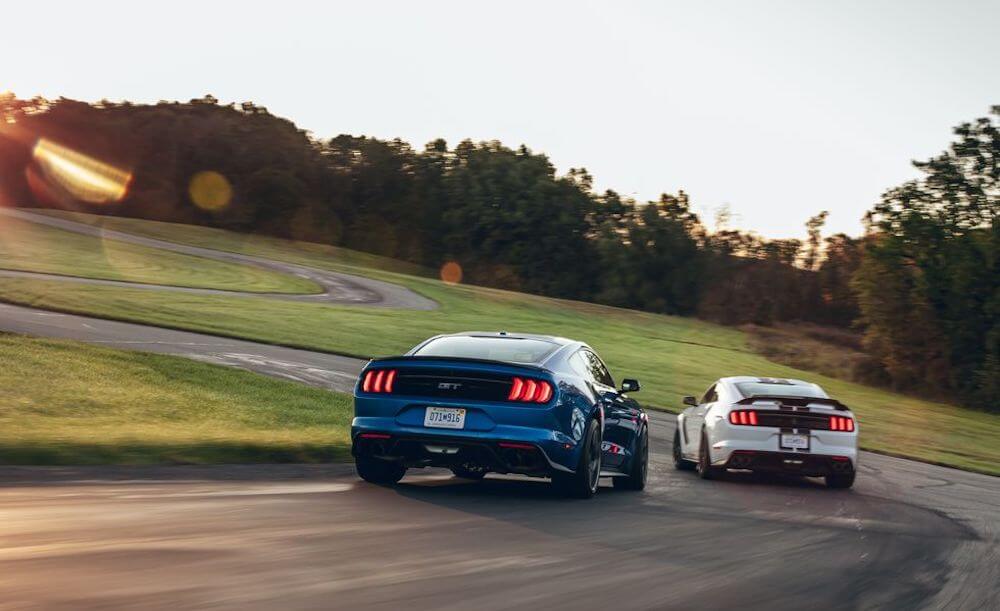
Head-To-Head
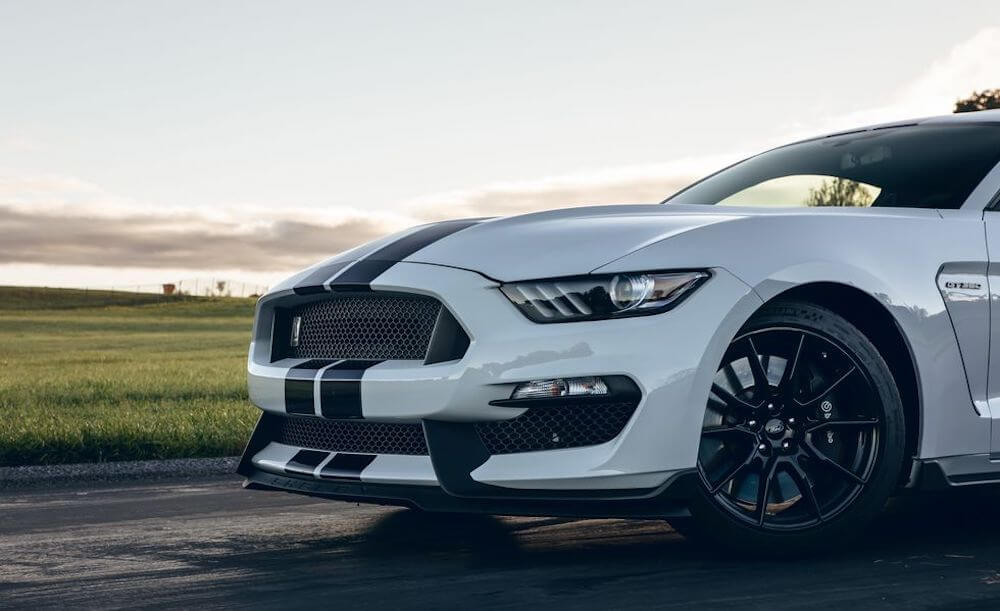

Shelby GT350
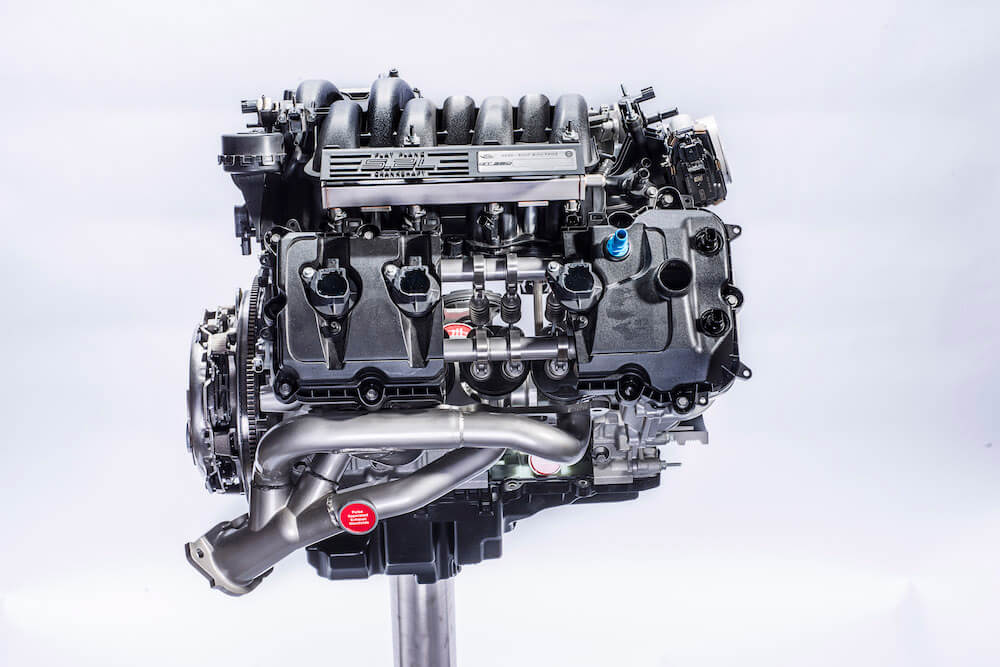

Mustang GT Performance Pack 2
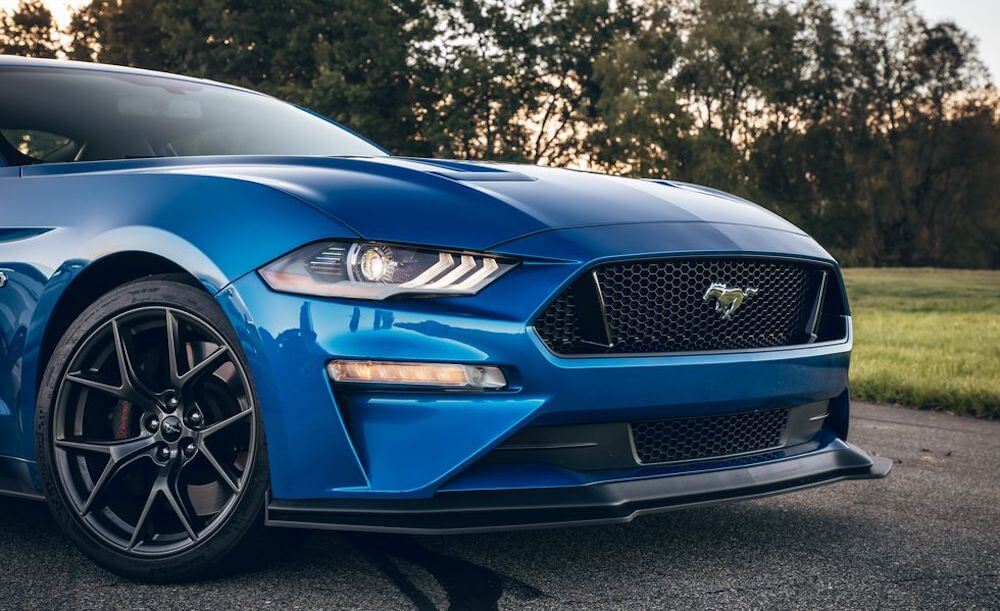
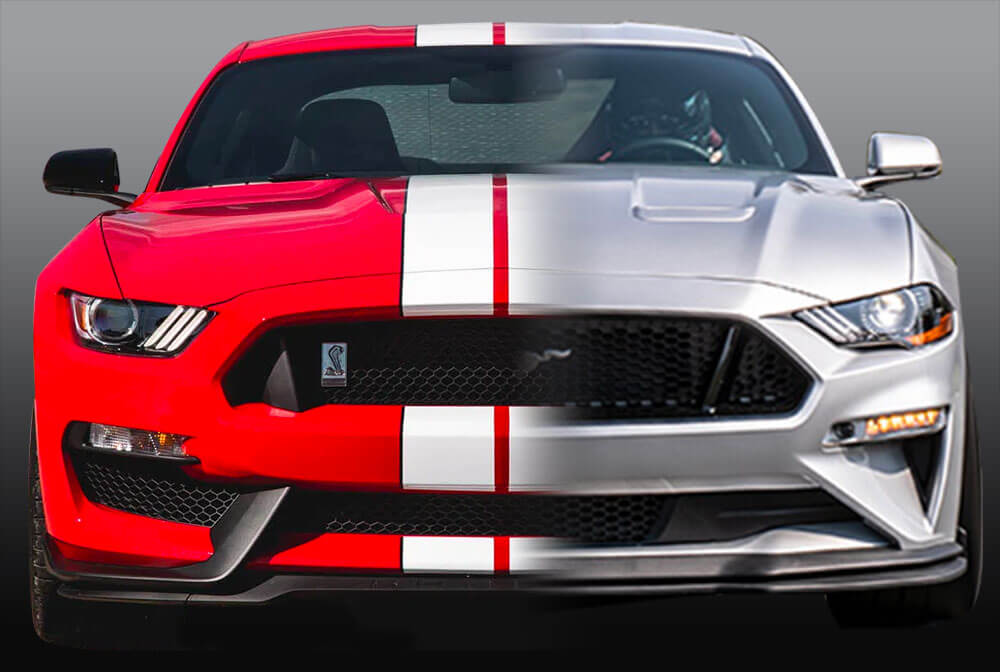
GT350 vs Mustang GT PP2: Engine & Performance
Shelby GT350: 5.2L "Voodoo" V8
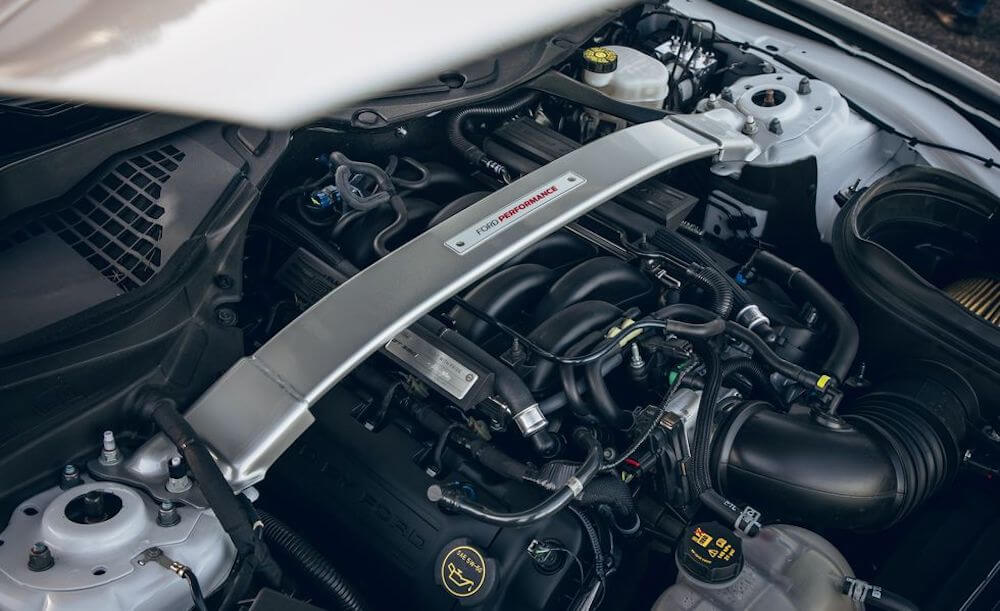
Mustang GT PP2: Gen III 5.0L Coyote
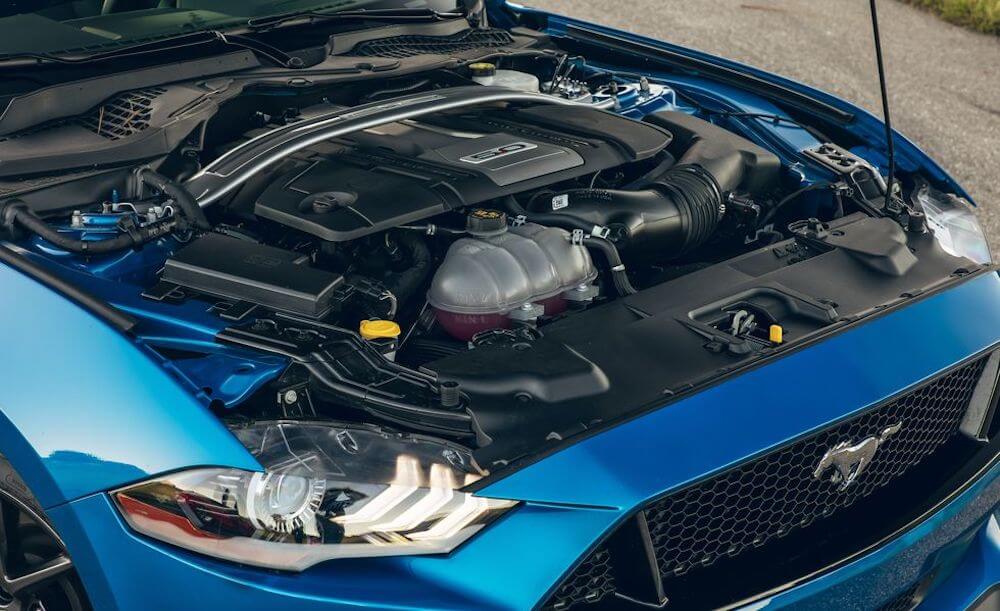
GT350 vs Mustang GT PP2: Transmission
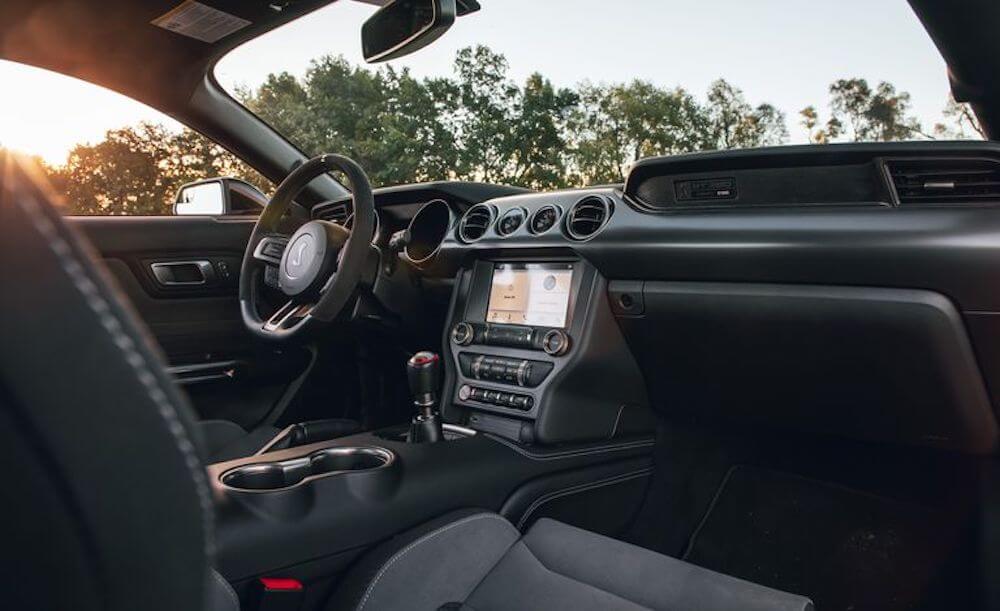
GT350: Tremec TR-3160
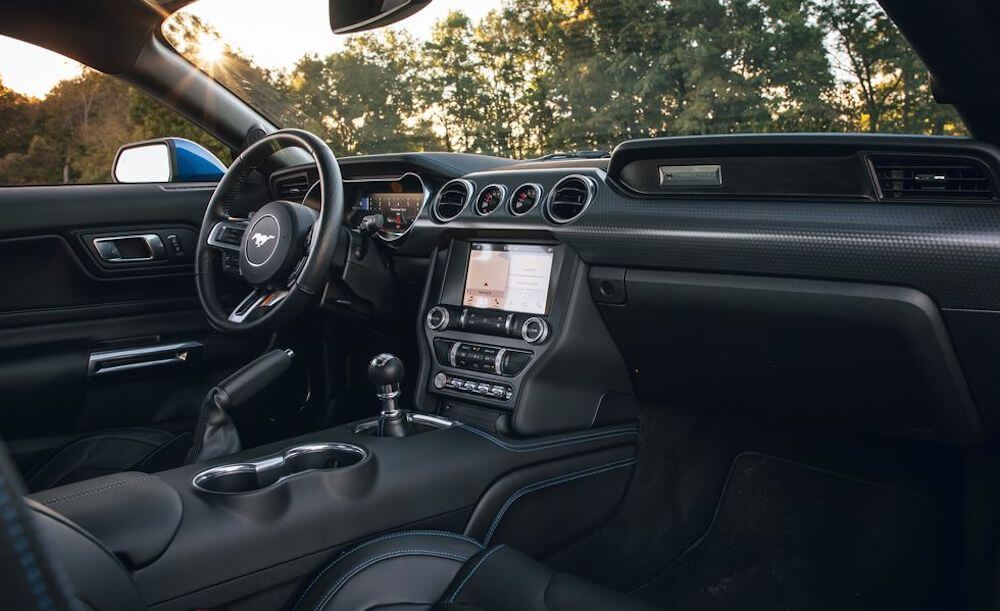
Mustang GT PP2: Getrag MT-82
GT350 vs Mustang GT PP2: Vehicle Specs
Vehicle Specs
Shelby GT350
Mustang GT Performance Pack 2
Base Price
$59,140 ($73,435 For GT350R)
$44,685
Drivetrain Layout
Front Engine, RWD
Front Engine, RWD
Engine
“Voodoo” Flat Plane Crank 90-degree V-8, Aluminum Block &
Cylinder Heads
"Coyote" Gen III 5.0L Ti-VCT 32V V8, Aluminum Block &
Cylinder Heads
Valvetrain
32V DOHC TI-VCT
32V DOHC TI-VCT
Displacement
5.2L, 315 Cubic Inches
5.0L, 302 Cubic Inches
Compression Ratio
12.0:1
12.0:1
Horsepower
526
460
Torque
426 LB/FT
420 LB/FT
Redline
8,250 RPM
7,500 RPM
Transmission
Tremec TR-3160 6-Speed Manual Transmission
Getrag MT-82 6-Speed Manual Transmission
Rear Axle Ratio
TORSEN 3.73
TORSEN 3.73
Front Suspention Configuration
Magneride Dampers, Struts, Coil Springs, Adj Shocks,
Anti-Roll Bar
Magneride Dampers, Struts, Coil Springs, Adj Shocks,
Anti-Roll Bar
Rear Suspension Configuration
Magneride Dampers, Coil Springs, Adj Shocks, Anti-Roll Bar
Magneride Dampers, Coil Springs, Adj Shocks, Anti-Roll Bar
Brakes Front & Rear
Brembo 6-Piston Front, 4-Piston Rear, ABS
Brembo 6-Piston Front, Single Piston Rear
Wheels
19” x 10.5” / 19” x 11.”, Forged Alloy
19” x 10.5” / 19” x 11.”, Aluminum Alloy
Tires
305/30R19 103Y / 315/30R19 104Y, Michelin Pilot Sport Cup 2
305/30R19 103Y / 305/30R19 104Y, Michelin Pilot Sport Cup 2
Related Articles





